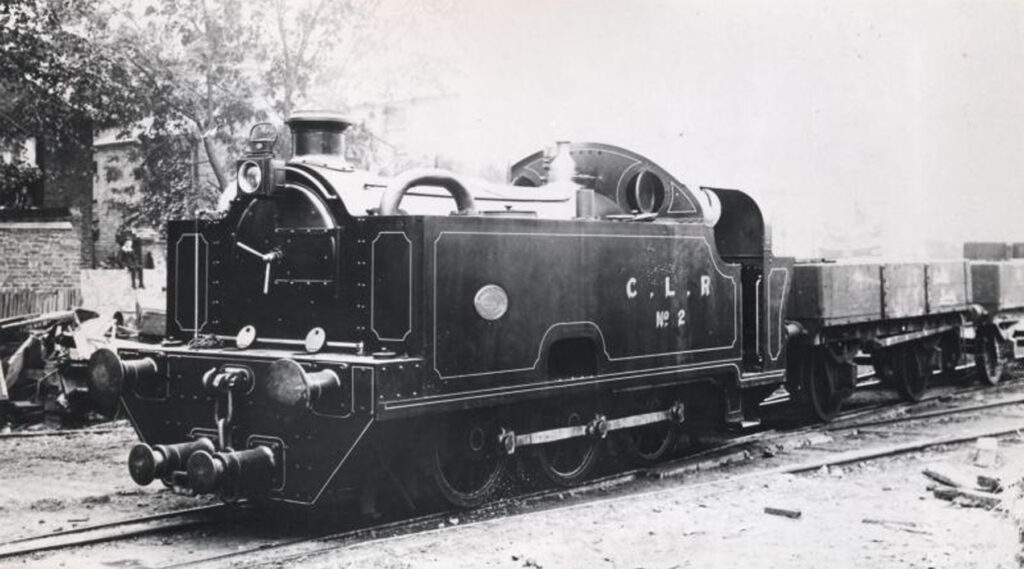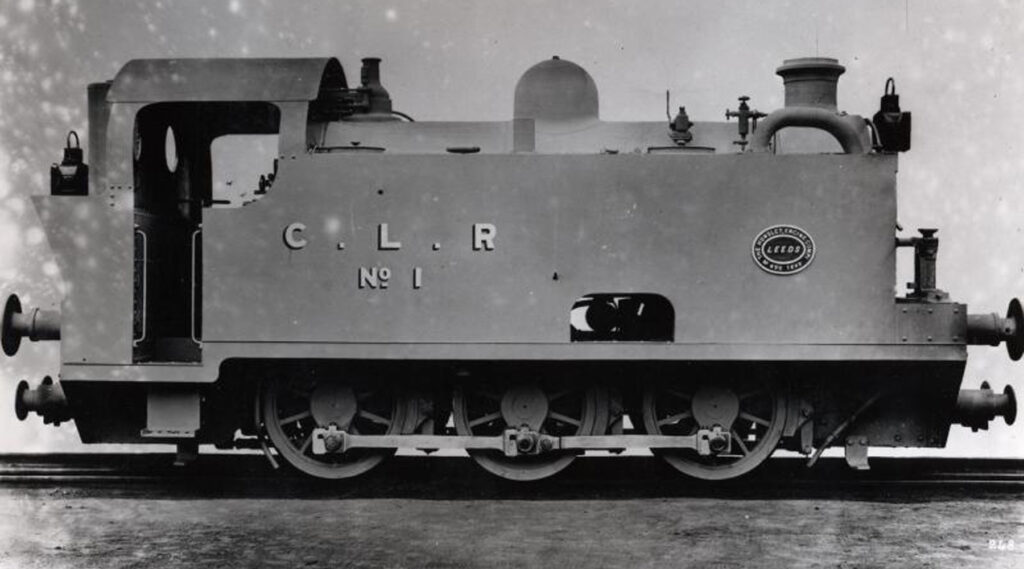When it opened in 1900, the deep tunnels of the Central line had to use electric trains because of the lack of ventilation for steam engines, but it’s not that widely known that they did have steam trains, used in the tunnels.
In its early days, when the London Underground used steam trains, they were limited to the sub-surface lines, with plenty of ventilation for the smoke to escape. Later, when the deep level tunnels were built, they used the newly invented electric trains instead.
Running steam trains through deep level tunnels is generally a bad idea because of the lack of ventilation to remove the steam and soot. And yet, the Central London Railway, as the Central line was known at the time, had two steam locomotives for use in the deep tunnels.
They never hauled passengers, although there’s no reason why they couldn’t have, but they were used to transport maintenance workers and equipment into the tunnels at night. The reason an electric railway needed steam engines to do that is quite simple, and would be the same reason if it happened today – the electricity is switched off at night when maintenance people are working on the tracks.
These days, the heavy engineering locomotives are powered by rechargeable batteries, but back in 1900, batteries powerful enough didn’t exist, so the Central line used a steam engine instead. They had two, made in Leeds by the Hunslet Engine Company in 1899, called unsurprisingly CLR No 1 and CLR No 2, although their official maker numbers were 635 and 636.
They look slightly odd, as if they’ve been squashed, and indeed they have been as they had to fit into the small Central line tunnels. You may also notice that on either side of the central boiler are two large rectangular water tanks. However, of the 1,250 gallons of water carried by the locomotive, only about 20% was used to produce steam in the boiler, as the rest was used to cool the hot steam back down to water and stop it billowing back into the tunnels.
Also, although they would use coal when above ground, they switched to oil when in the tunnels to help reduce the amount of soot emitted into the confined spaces.
Particularly observant experts in locomotives may also notice that the cylinders that drive the wheels, usually on the outside, are not visible, as they’re on the inside of the engine to help reduce the size of the engines. The middle of the three wheels also lacked the flanges that train wheels usually come with to help the engine turn on tight corners in the tunnels.
All told, a very heavily customised steam locomotive designed to work in a confined space that wasn’t designed for steam trains.
Although the locomotives were used in the tunnels during overnight engineering hours, they spent most of their time during the day as shunters in the depots.
The Central line had a somewhat troubled start as a passenger service with problems in the design of its electric locomotives, which took a few years to sort out. However, by 1910, they could fit batteries into two of their passenger carriages, and once proven, that spelt the end of using steam trains in the tunnels.
The two steam locomotives were finally scrapped a century ago, in 1923.
But, for a while, there were indeed steam trains running through the Central line.
Sources:
Workhorses of the London Underground by J. Graeme Bruce
Three-quarter front nearside view of a Central London Railway 1899-class locomotive no 2, 1899
Side view of 0-6-0 CLR 1899-class locomotive no 1 by Topical Press, 29 Aug 1927
Locomotives I have known by John Maskelyne – London Underground Railway Society journal October 1967
Central Line: A Brief History by Charles Edward Lee
The story of London’s Underground by John Day









Its a shame they were scrapped. Would be a great heritage rail project to recreate one in the future for running on Epping and Ongar line etc given its unusual (to me) design.
Interesting modeling project, I wonder if there any way to find some specs on it ie wheel size, wheel base ect
If they exist the TFL museum depot in Acton would have them.
That is so interesting.
What it describes is using the technology of the time to the best effect.
I lived next to the Central Line in the 1950/60’s and they used to run a steam train every night about 6.30pm which was a goods train mainly hauling coal wagons which served the various Coal Merchants located along the line, Leytonstone station had one, it also had stables for two horses which worked the wagons inside the yard. The Engine I remember was not one of those illustrated but a normal steam engine I think a six wheeler which usually pulled half a dozen open wagons with the odd van but always had a a guards wagon at the rear. In black livery with the British Rail button
That would have been a normal loading gauge British Rail loco, the east end of the Central Line remained connected to the mainline at Leyton into the 1970’s. The first passenger train every morning was a British Rail diesel multiple unit too!
As Joe says, these were operated by main-line gauge stock. They were residual BR/ER services that continued until local wagonload freight died off – early 70s.
Once, in the late 1940s, I was taken every six months as a small boy to Moorfields Eye Hospital. At Old Street Tube Station I distinctly remember a steam hauled goods train hissing and clanking through the station. This was a major excitement for me ! It was coal fired as I recognized the wonderful smell living as we did up in Kenton where I used to watch the LMS express trains on their way north.